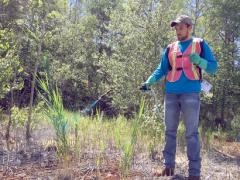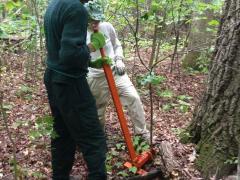Mixed News on Invasive Species Front

Despite the discouraging discovery of an invasive species near Lake George, the Adirondacks have also seen some recent bright spots in the fight against invasive species.

Despite the discouraging discovery of an invasive species near Lake George, the Adirondacks have also seen some recent bright spots in the fight against invasive species.

In this article, Ethan Tapper, the Chittenden County Forester, breaks down the steps in the management of invasive species so that any landowner with an invasive plant problem can have a clear path forward.

The Japanese barberry tree, a popular landscaping shrub with attractive flowers, was banned from sale in the state of New York in the spring of 2015. The Japanese barberry tree is one of the 11 plants on the state’s banned invasives list, but it will soon be returning to nurseries because of research done by the University of Connecticut. The return will likely take place in the next year.

This is part two in a three-part series on how to create an invasive plant management plan. This section will guide you through outlining the description, purpose of management, desired condition, and current condition of each site under consideration

Windham County Forester, Bill Guenther, shares a story about an attempt to regenerate a stand of white pine trees. The story features a woodlot in Westminster where a forester prepared a shelterwood cutting of mature white pine. Unfortunately, several years later, the stand of regenerated white pine was completely taken over by the invasive plant glossy buckthorn.

Science Daily reports--
Date: May 18, 2017
Source: Cambridge University Press
Summary: It is easy to assume that getting rid of invasive plants will allow a local ecosystem to return to its natural state, with native vegetation flourishing once again. However, the impact of weedy invaders can linger for years, a new report outlines.